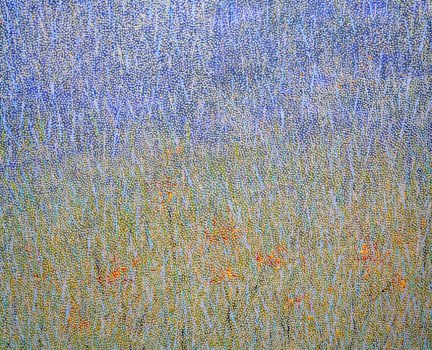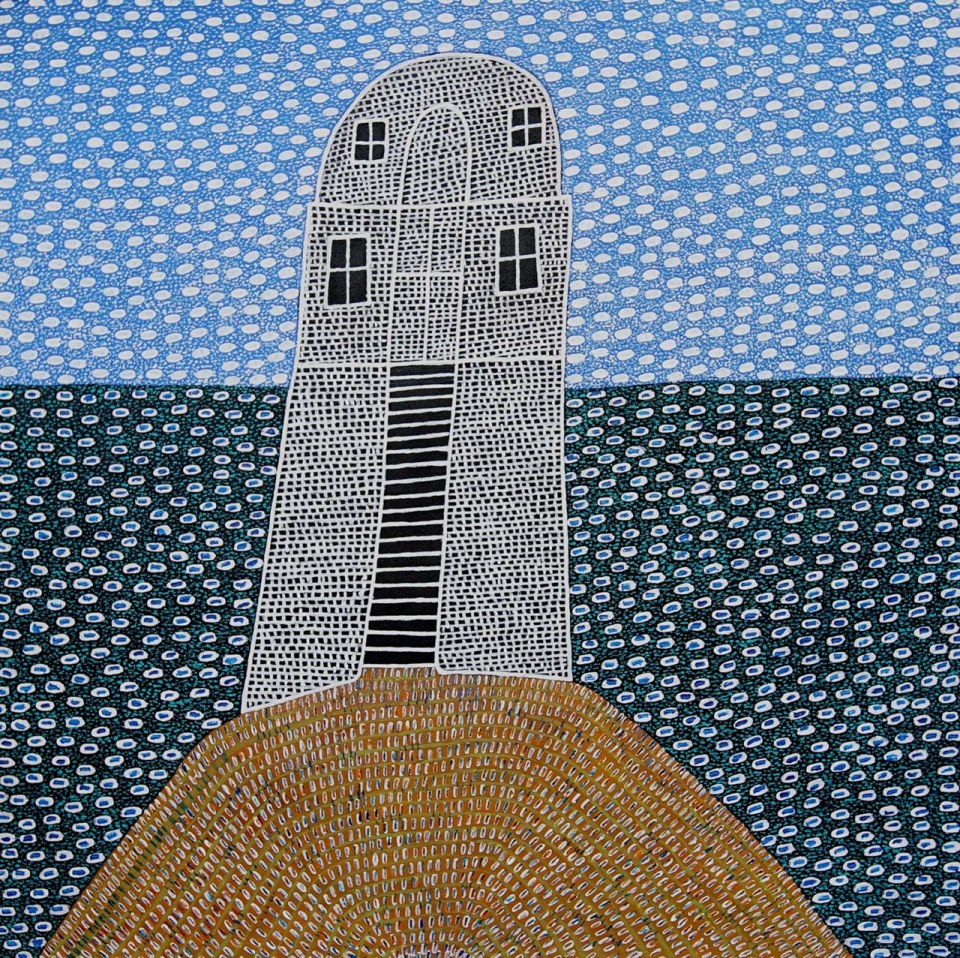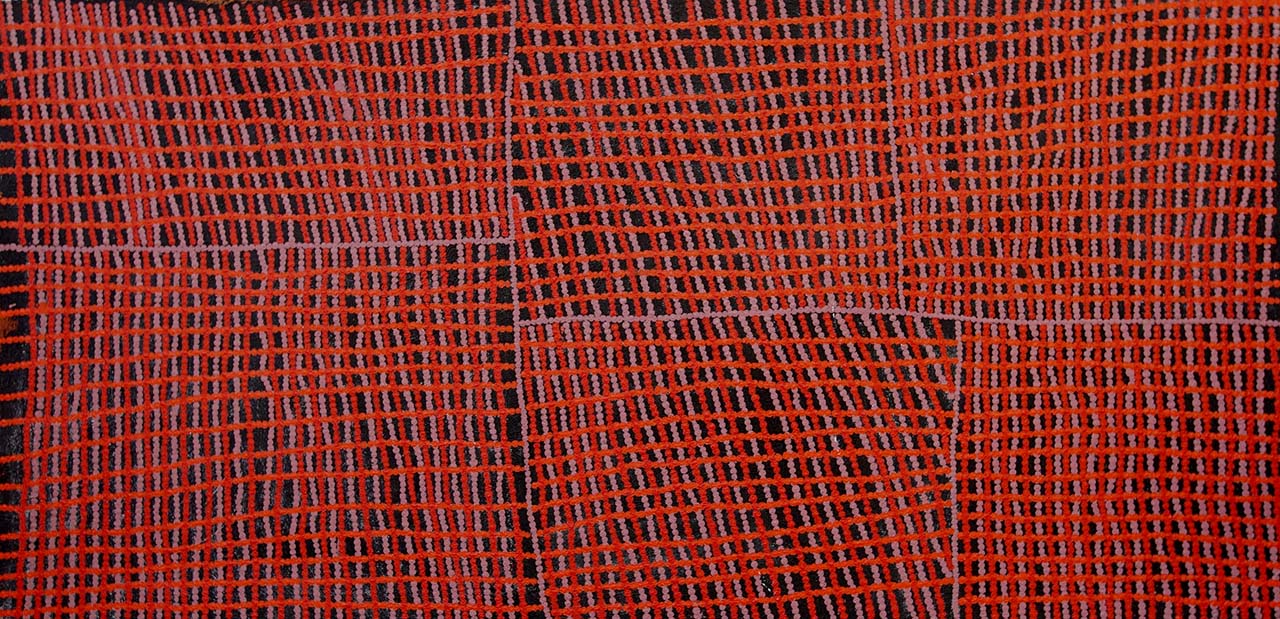Yinjaa-Barni Show A Softer Side of The Pilbara
We're just hanging a beautiful new exhibition from the Yinjaa-Barni artists. These fine painters operate out of Roebourne in the Pilbara and the group exhibit here at Japingka about every eighteen months or so.
The Yinjaa-Barni artists have their own Art Centre right in the town of Roebourne. The artists are all people who live in the region, so their art is very particular to their part of the Pilbara.
There are about 8 to 12 artists in the art collective. The senior artists have been painting in the group for about 10 years. They're also bringing along the younger generation, and usually we get 2 or 3 new artists appearing in each exhibition.
It's been a great journey for Roebourne artists to find their own voice and to find the stories that intrigue and inspire them. A lot of their stories come from the landscape, the immediate country, how it re-generates, what water does in that climate, even what it's like as a dry landscape.
"Colours Through the Rocks" is a common title that looks at those incredible colours deep within the fractured rocks in the Pilbara. It's a real visual element that's very particular to their country. The artists are originally from the traditional lands out on the Fortescue River, so they're from quite well-watered parts of the Pilbara. They now live closer to the coast.
This exhibition is called, The Marrga - Creating the Pilbara and many of the stories relate to creation times. Particularly, the artist Marlene Harold talks about creation times in her work. She talks about a time in the beginning when the world was soft and the ancestors were living on the land. There was smoke, smoke from their fires, and just the kind of gentle, steamy air of a world that was still soft. Out of that is created the entire world and landscape that people have come to know.
Marlene Harold
These images from Marlene Harold are fantastic creation stories with a very particular look. They're not at all like any other aboriginal artists' work. Some people find it more similar to impressionist landscapes because they're gorgeously soft. You can see the grass and the particles of steam and the smoke drifting over the landscape. It's not the Pilbara as it is now. She is painting the Pilbara as it was being created by Yindji-Barndi ancestral beings.
Clifton Mack
There's a really distinct painting of a lighthouse in this exhibition. Clifton Mack has adopted this image from Jarman Island, off the coast outside Karratha. There's a lighthouse there; a historical site and it's something Clifton has previously painted. He constructs the image out of painting elements from Aboriginal art. The whole painting is constructed out of dots and dashes and contrasting shapes that are more what we think of when an Aboriginal artist creates their landscape. In this painting, Clifton has applied that way of seeing to a physical building. It sits there with its patterning that's so typical of Aboriginal painters. You can see that style of representation all over the sea, all over the building, all over the little rocky island. It's a quite extraordinary image.
Clifton is the most experienced painter in the group and he has won a number of awards. I think Clifton is the best known. He's probably the most collectible, maybe just ahead of Marlene Harold. He sometimes paints very large-scale. This lighthouse painting is maybe only 90 cm squared. Some of his paintings are over 2 meters across. Clifton is also quite varied in the subjects he paints.
His work always that signature style of mark making. It's almost like breaking the subject down to its component parts, like its molecules and its building blocks and all its components. The whole thing is made out of these components, which is an absolutely indigenous way of looking at things; it's not at all our Western way of looking at things.
I think people will be interested in this exhibition because it's so varied. The artists all have their own individual stylistic approaches. The stories are about the Pilbara and their country, but the colours and the styles and the way they make the paintings are all different. I think it's a wonderful, diverse series of paintings from a group of artists who all work in the same community.
Aileen Sandy
This may be the sixth exhibition that Yinjaa-Barni artists have put on Japingka Gallery. We see new artists come through who develop really strong imagery. For example, one painting by Aileen Sandy has a red grid pattern as a way of representing the rock structure. You would almost feel like it's a engineering drawing or geological design of how the rocks are put together.
She has come out in the last couple of exhibitions with some extraordinary paintings. There's always something surprising. I think overall the feel of this exhibition is actually quite soft. It has a kind of toned down softness to it which is more pronounced than maybe even earlier exhibitions by this group.
We tend to think of the Pilbara for its harshness, for its extremes, for its arid and very rocky terrain. The Yinjaa-Barni approach shows you another way of thinking about that place. These Yinjaa-Barni stories reflect on a softer side, like the seeds that come from the trees and flowers and the regrowth of the country after rain. These paintings are all very affectionate and engaged ways of looking at the Pilbara country. It's a unique perspective from these indigenous painters who live there.
The Marrga - Creating the Pilbara opens in Gallery 1 on 13 February. I hope to see you there.
Read more:



